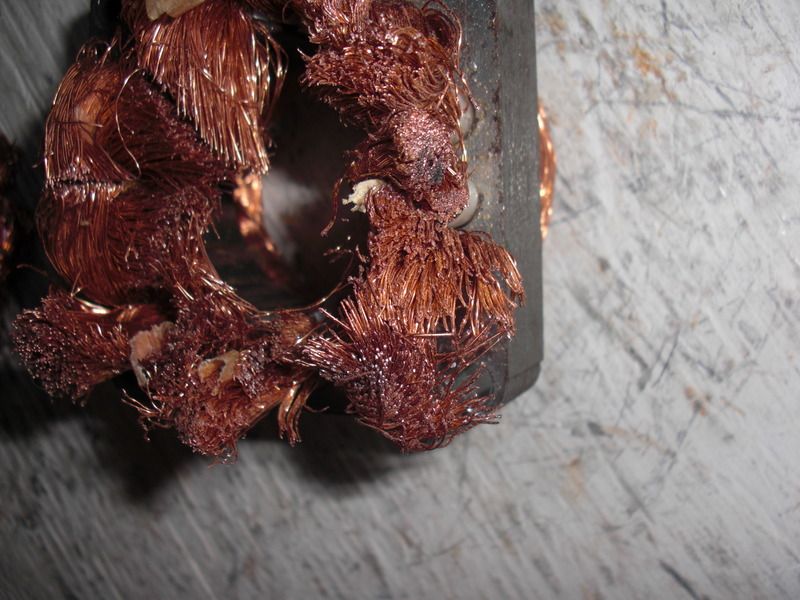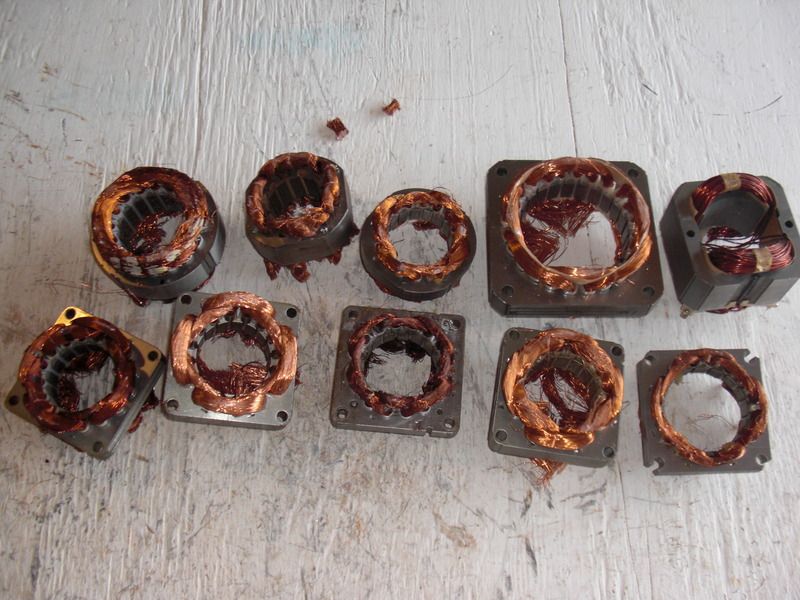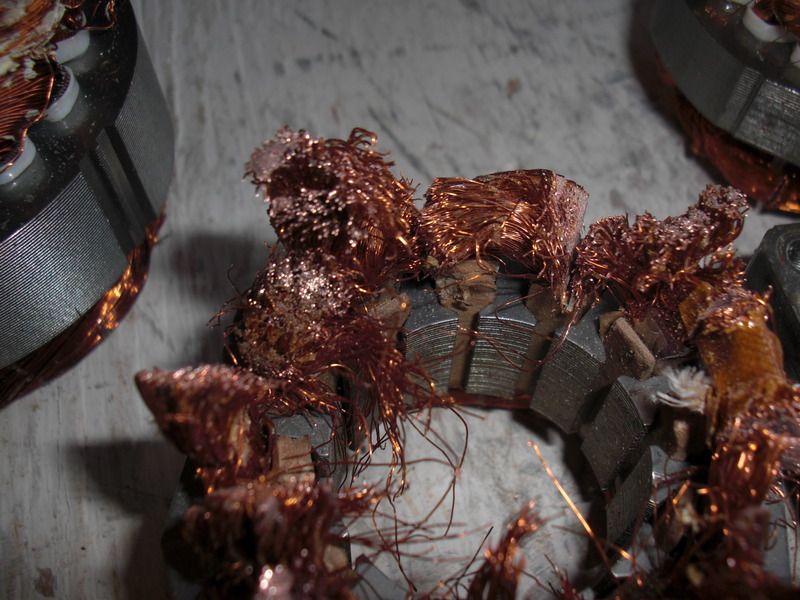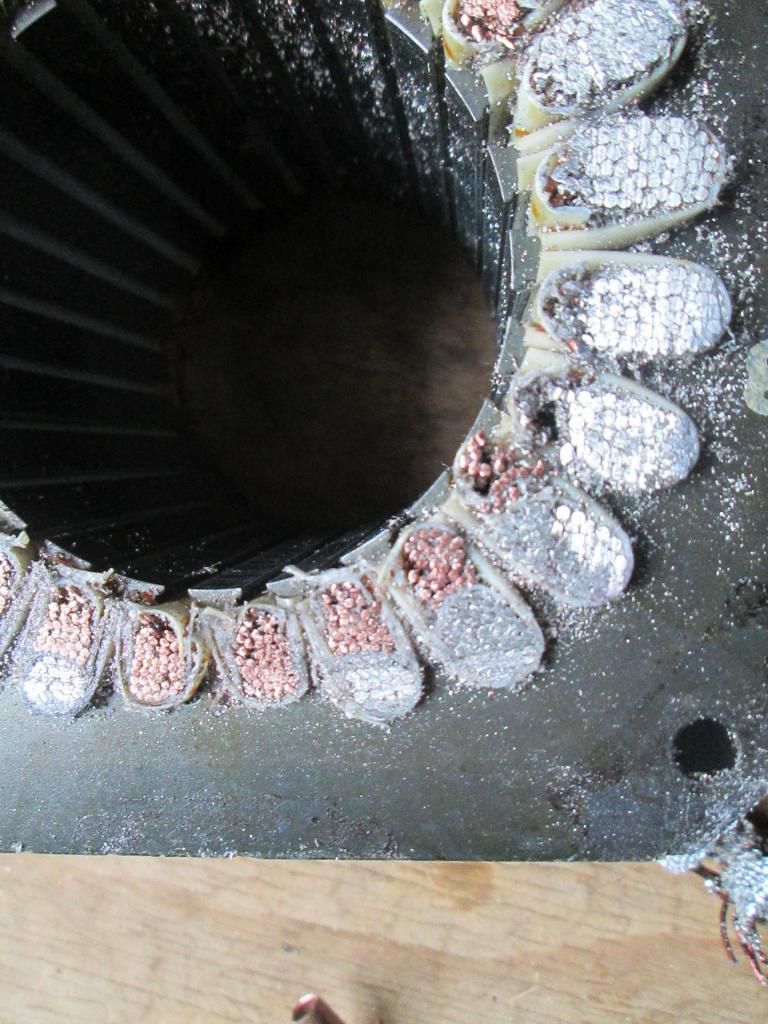Its pretty rare to find a mix of Coipper and Ali wire in one motor.
Yep the redder wires Copper and the silver coloured wire is Aluminium.
If you cut the loops of wire flush with the end of the Iron core it makes it easyer to pull out.
You can use a largish angle grinder or a carpenters chisel to cut the end of the loops off.
You will mostly find Aluminium wired motors in clothes driers. It turns up in
microwave transformers, CRT Tv degaussing cables and like you found, electric motors (I tthink the one you have is from a fridge compressor)
These parts you have are a great source of Copper wire. About two pounds of wire, maybe 1Kg.'









 Register To Reply
Register To Reply












Bookmarks